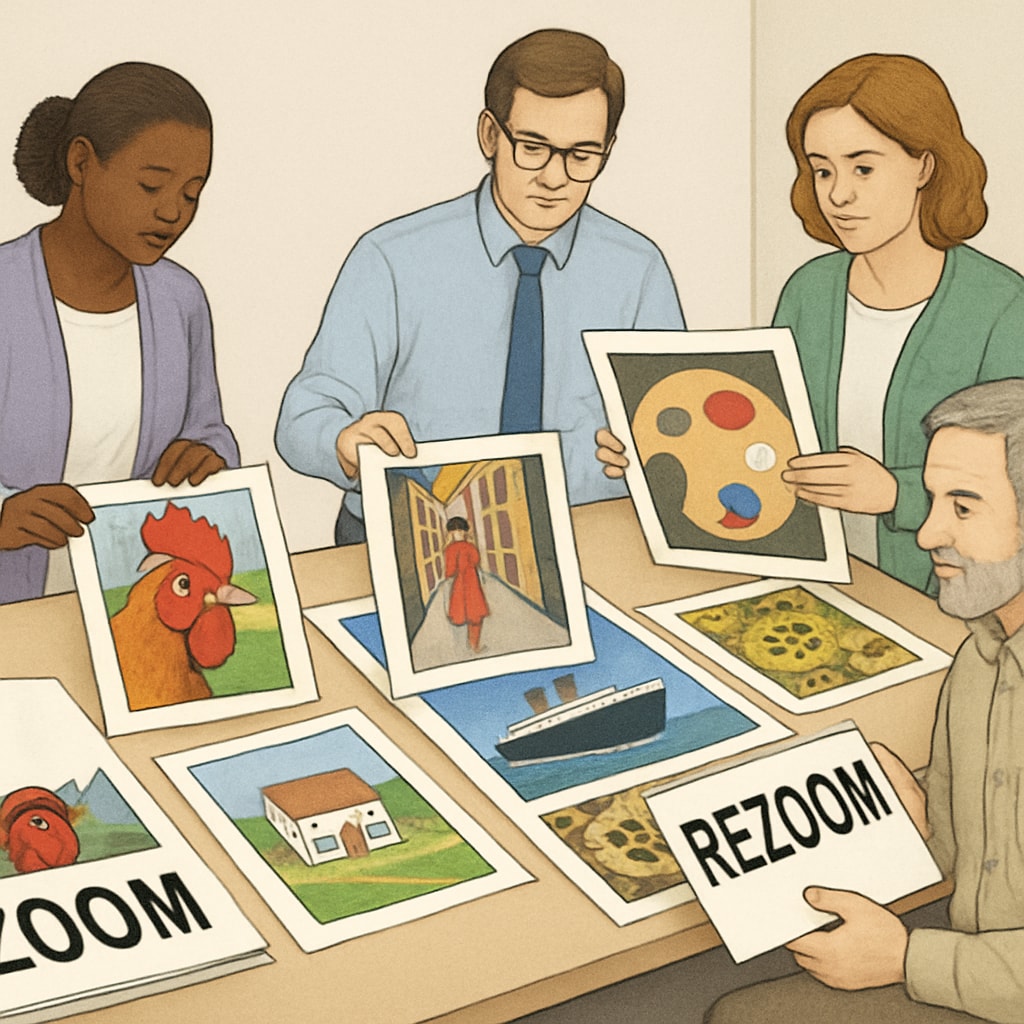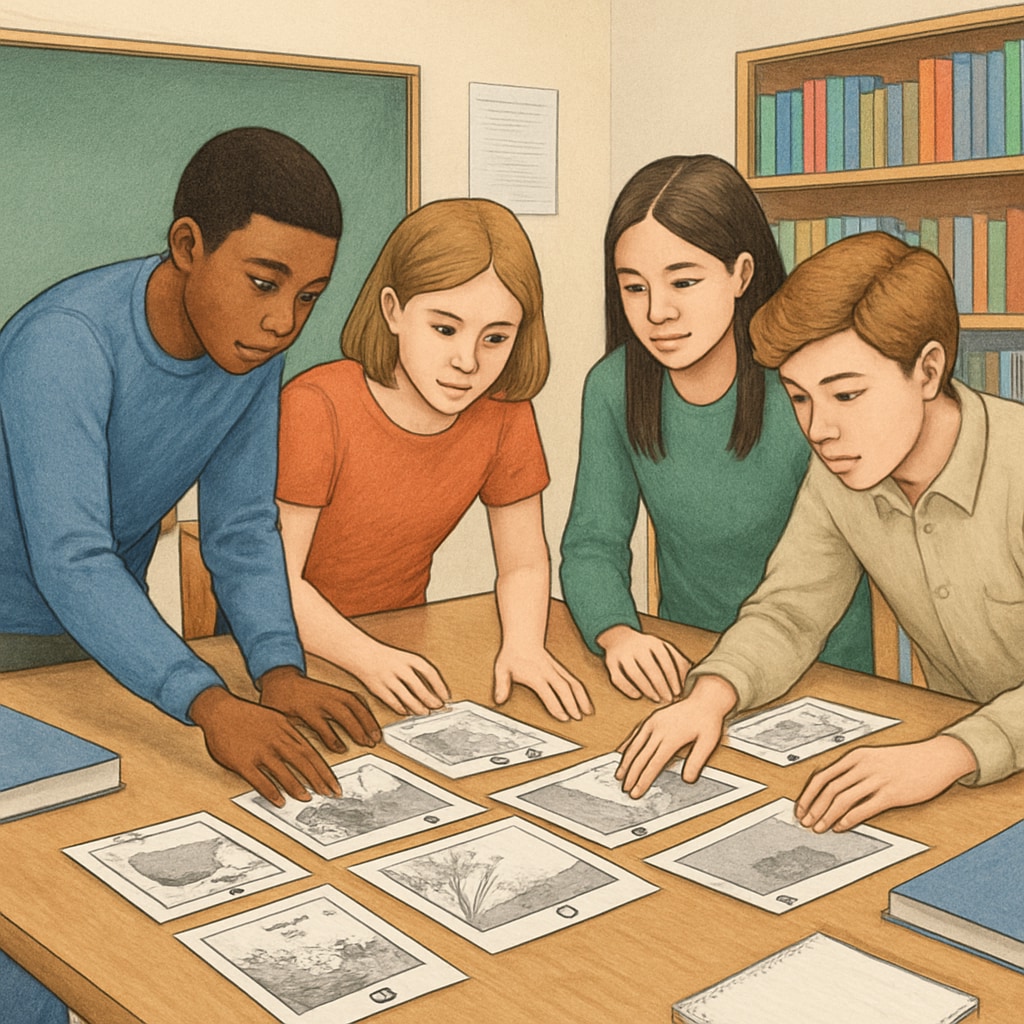Engaging students with interactive activities like Zoom and ReZoom can significantly enhance classroom learning. However, organizing these unique teaching materials often poses challenges for educators. This article provides a comprehensive “Zoom, ReZoom, 教学活动, 顺序指南 (Zoom/ReZoom Activity Sequencing Guide)” to help teachers effectively reconstruct the correct order, maximizing the impact of these resources in K12 classrooms.
In this guide, we’ll explore techniques for identifying visual clues, understanding the logical flow of teaching progressions, and utilizing community resources to restore the intended sequence of these remarkable activity books.
Understanding the Zoom/ReZoom Concept
Zoom and ReZoom, created by Istvan Banyai, are wordless picture books designed to challenge students’ perception and foster critical thinking. Each page either zooms in or zooms out, creating a continuous narrative that connects the images. The teaching activity involves rearranging the pages in the correct sequence, requiring students to observe, collaborate, and think critically.
As a result, these activities are ideal for developing teamwork, problem-solving skills, and visual literacy in students. However, the absence of words sometimes makes it difficult for teachers to restore the original sequence if the materials are misplaced.

Strategies for Sequencing Zoom/ReZoom Activities
Reconstructing the correct order of Zoom and ReZoom pages requires a systematic approach. Here are three effective strategies:
- Analyze Visual Clues: Begin by closely examining the illustrations. Look for recurring objects, patterns, or transitions that connect one page to the next. For example, a bird on one page might appear smaller in the background on the subsequent page.
- Follow the Logical Flow: The books are designed to follow a zooming-in or zooming-out progression. Familiarize yourself with this concept and arrange the pages accordingly to create a seamless visual narrative.
- Engage with Community Resources: Many educators have shared their experiences and tips for sequencing these materials online. Platforms like Teachers Pay Teachers and Reddit’s Teaching Community can provide valuable insights and even pre-sequenced templates.
By combining these strategies, educators can efficiently restore the original sequence and provide a meaningful learning experience for their students.
Maximizing the Impact of Zoom/ReZoom in the Classroom
Once the sequence is restored, it’s essential to implement the activity in a way that maximizes student engagement and learning outcomes. Here are some tips:
- Encourage Teamwork: Divide students into small groups and assign each group a portion of the pages. This encourages collaboration and ensures that everyone participates.
- Facilitate Open Discussions: After completing the activity, hold a class discussion to reflect on the experience. Ask students how they identified connections and what challenges they faced.
- Incorporate Cross-Curricular Themes: Use the books as a springboard for discussions on art, storytelling, or even science topics like perspective and scale.
Using these approaches, educators can transform the Zoom/ReZoom activities into a dynamic tool for fostering creativity and critical thinking in their classrooms.

Why Sequencing Matters
The sequence of the Zoom/ReZoom pages is crucial to the activity’s success. A well-ordered narrative allows students to trace the progression of ideas and develop a deeper understanding of the relationships between images. Conversely, a disorganized sequence can lead to confusion and diminish the educational value of the exercise.
Therefore, investing time in restoring the correct order not only benefits students but also ensures that the activity achieves its full potential as an engaging and thought-provoking teaching tool.
In conclusion, the Zoom/ReZoom “教学活动, 顺序指南 (Activity Sequencing Guide)” provides educators with practical solutions for overcoming the challenges of organizing these unique materials. By following the steps outlined in this guide, teachers can unlock the full potential of Zoom and ReZoom activities, creating meaningful and memorable learning experiences for their students.
Readability guidance: This article ensures clarity through short paragraphs, active voice, and strategic use of transition words. Lists summarize key points, and visual placeholders enhance understanding. Strategies are practical and actionable, promoting ease of implementation for educators.


